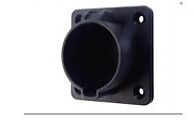kubel
Well-known member
Looking at the two cheapest high current level 2 charging station options. Comparing them spec'ed out to almost the same price just to give a good comparison.
Did I get all that right?
It's hard to say which one wins. OpenEVSE is a great value and a fun build and comes with an LCD standard and a really nice enclosure, but JuiceBox comes pre-assembled and offers a nice docking option. Both offer awesome value and to me are on the leading edge.
I'm leaning towards JuiceBox because of the docking option. I wonder how difficult it would be to fabricate something similar for the OpenEVSE enclosure.
Code:
OpenEVSE Combo/Enclosure JuiceBox Base Assembled
Cost $265.00 $262.00
Rated (continuous) 50A 60A
Weatherproof Enclosure Yes Yes
Powdercoated Enclosure Yes No
Enclosure Mounting Options Flange (+$10) Dock (+$30)
LCD Yes (+$74 presoldered) No
Preassembled No YesDid I get all that right?
It's hard to say which one wins. OpenEVSE is a great value and a fun build and comes with an LCD standard and a really nice enclosure, but JuiceBox comes pre-assembled and offers a nice docking option. Both offer awesome value and to me are on the leading edge.
I'm leaning towards JuiceBox because of the docking option. I wonder how difficult it would be to fabricate something similar for the OpenEVSE enclosure.



